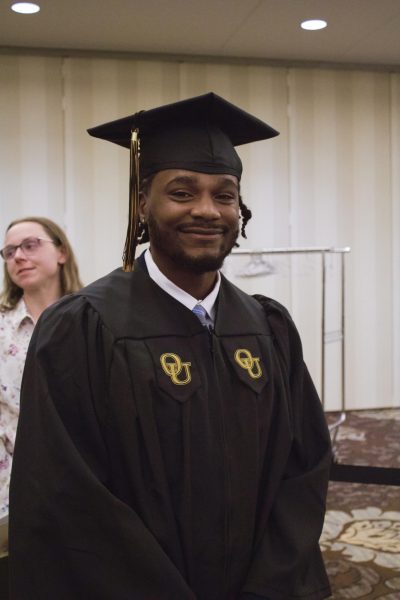Student wins American Society of Safety Engineers national student paper competition for environmental research
It’s a known fact that college students live busy lives, but that doesn’t stop students from taking interest in the things happening around them.
Danielle Kaminski, a senior majoring in occupational safety and health at Oakland University, recently won the American Society of Safety Engineers national student paper competition, taking a $500 cash prize and a $700 stipend.
After a month of research, she was ready to present her award-winning piece that dealt with environmental problems to the American Society of Safety Engineer’s national student paper competition.
Kaminski submitted her paper for many reasons, but was enticed by the travel stipend to attend the ASSE Professional Development Conference in Denver, Colo. that came with the award.
Her paper, “The Gulf of Mexico Dead Zone,” talks about the area where the Mississippi River feeds into the Gulf of Mexico and the inner and mid-continent between the river and the northern Texas coast known as the “dead zone.”
The name reflects the low oxygen level concentration in the area that does not allow aquatic life to be sustained, otherwise known as hypoxic water.
In her paper, Kaminski said the primary cause of hypoxic water is altered fertilizers that boost their oxygen used by farmers along the Mississippi River. This alteration causes the fertilizer to have a higher concentration of nitrogen and phosphorus. When the nitrogen-rich fertilizer runs off from the river into the Gulf of Mexico, it causes algae growth and oxygen reduction, restricting the lives of bottom dwellers such as worms, snails, crabs and clams that are not mobile enough to move away.
The “dead zone” results in increased travel for fisherman, increased fuel use and increased seafood costs, since the mobile sea life move further away from the shore, she said.
Kaminski spent a month researching all of the information, which she says was because there were a vast amount of opinions about “dead zones” available.
“Danielle’s paper presented a very complete view of the benefits as well as the unintended consequences of one of the current ‘green’ initiatives of using bio-fuels in relation to how the environment is impacted,” Frank D’Orsi, chair of the Editorial Review Board, said.
Kaminski said she wanted to focus on something that pertained to the clean water act because she feels there is a lot that could be changed and improved on.
Kaminski attended Dakota High School in Macomb before enrolling at Michigan State University to obtain a bachelor’s degree in communicative sciences and disorders. After graduation, she had two options: either earn a master’s degree in special education, or a master’s degree in occupational safety and health. She elected to earn a degree in occupational safety and health and enrolled at OU.
“I fell in love with it and everything safety related,” she said.
Kaminiski currently serves as the vice president of the OU Student Section American Society of Safety Engineers and will graduate from the university in August with her second bachelor’s degree in occupational safety and health.
She will intern with General Motors in May and hopes to remain with them after her internship for additional experience in her field of study.
“I would love to one day work for the government, like MIOSHA (Michigan Occupational Safety and Health Administration) or the EPA (Environmental Protection Agency),” Kaminski said.
Immediately following her bachelor’s degree, Kaminski plans to get a master’s degree in safety management. She also hopes to get her certified safety professional certification.












